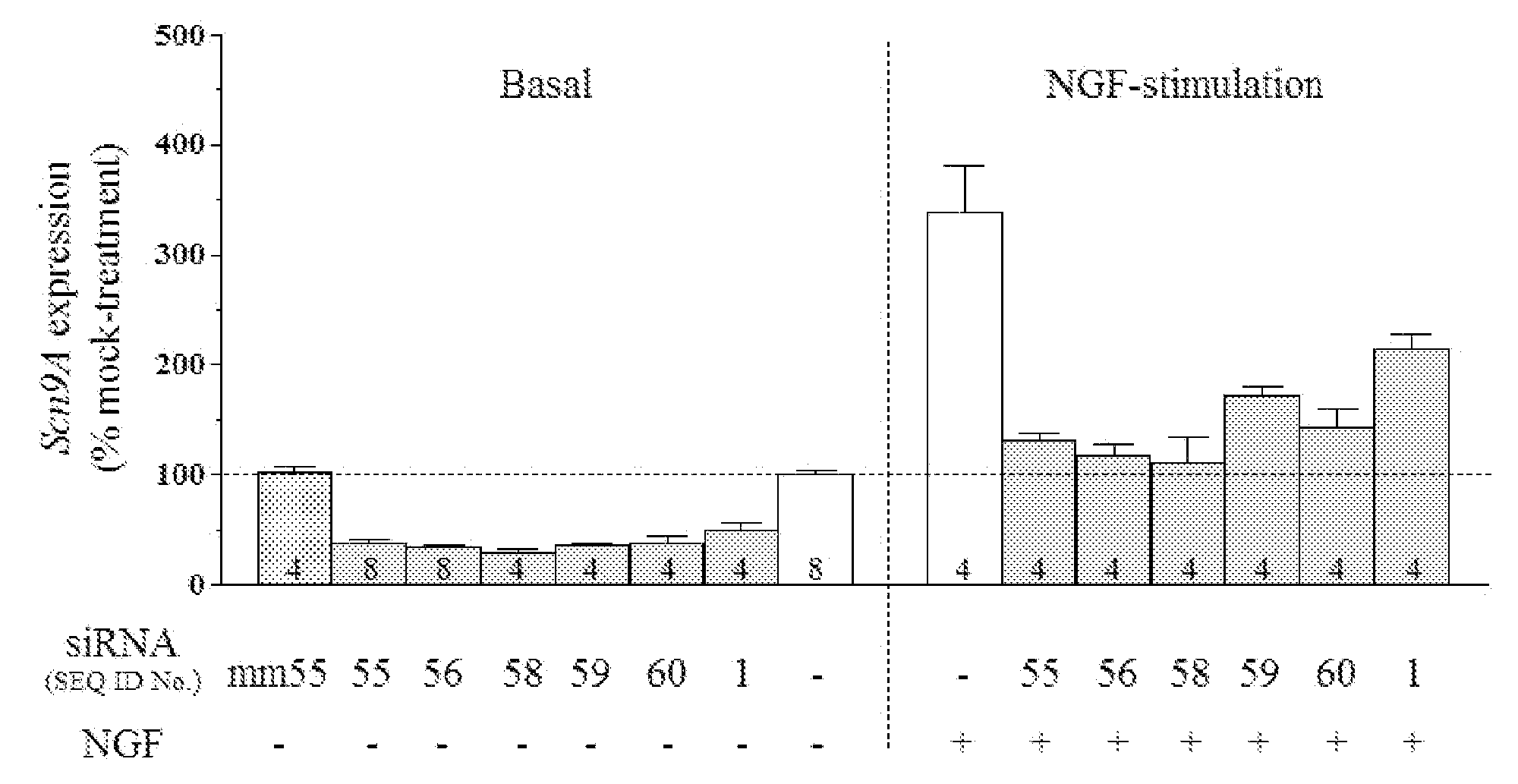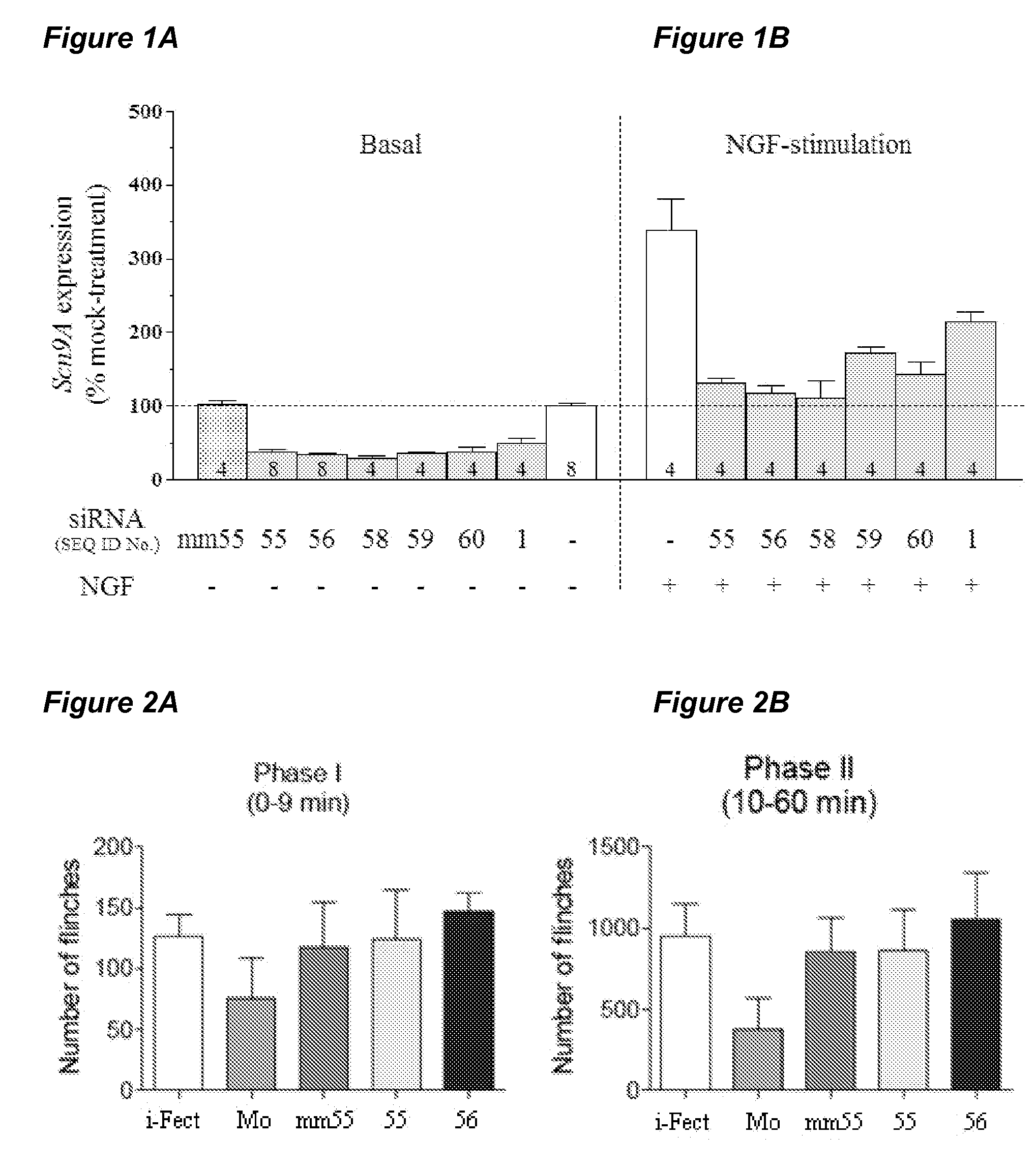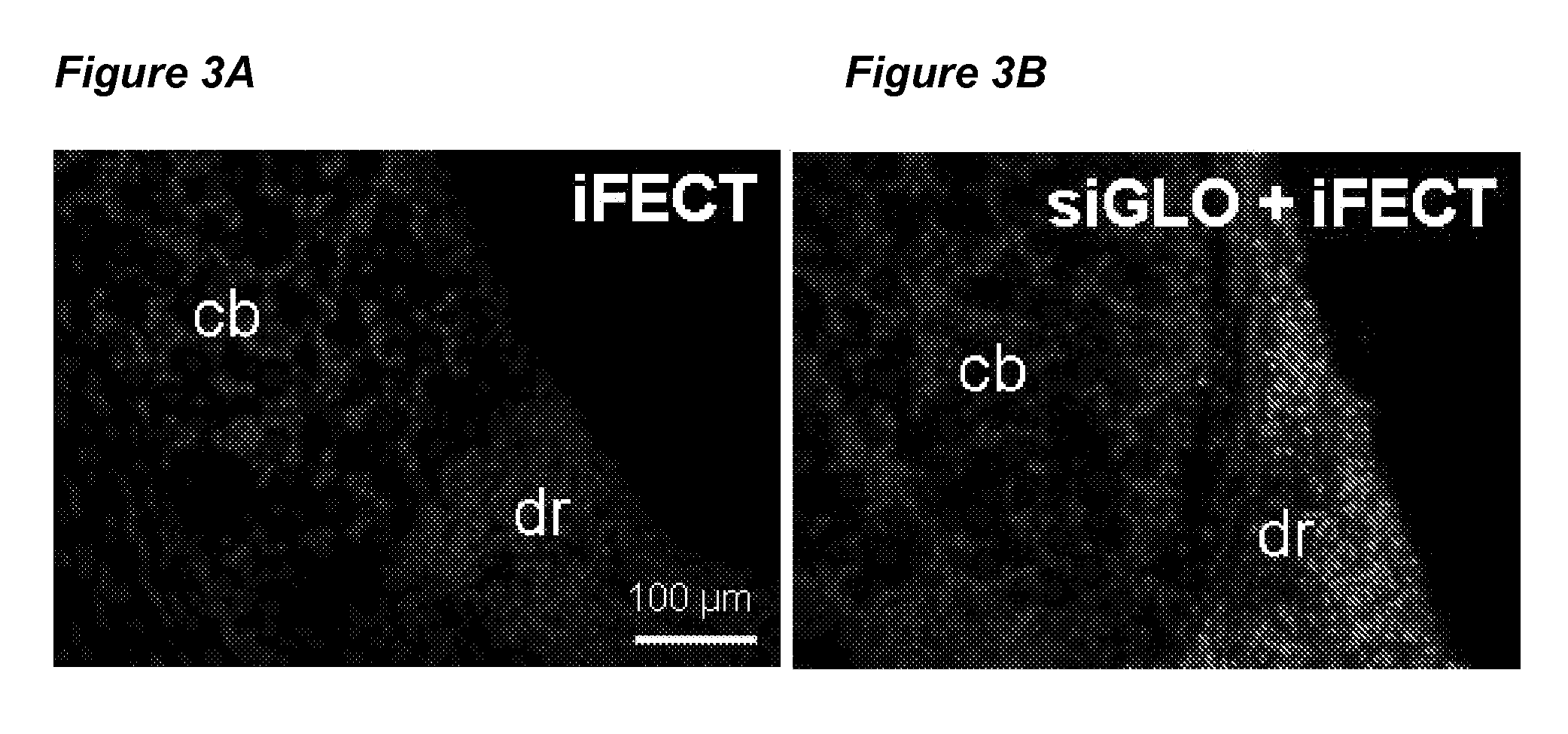Suppression of scn9a gene expression and/or function for the treatment of pain
a technology of scn9a and gene expression, applied in the direction of genetic material ingredients, drug compositions, organic chemistry, etc., can solve the problems of reducing the ability of otherwise healthy individuals to sense any form of pain, side effects involving the central nervous system (cns), and reducing the expression of scn9a gene. , to achieve the effect of suppressing the expression of scn9a gene and reducing the amount of nav1.7 channels
- Summary
- Abstract
- Description
- Claims
- Application Information
AI Technical Summary
Benefits of technology
Problems solved by technology
Method used
Image
Examples
example 1
Down-Regulation of SCN9A in Rat Pheochromocytoma Cells
[0072]In the example demonstrated in FIG. 1, siRNAs were screened for their ability to down-regulate the expression of SCN9A in rat pheochromocytoma (PC12) cells. PC12 cells were transfected with siRNAs, as denoted by their SEQ ID numbers in the table above. The siRNA identified as SEQ ID NO: mm55 comprises the siRNA of SEQ ID NO: 55 incorporating 3 mismatches in the sequence at positions 5, 10, and 15 of the antisense strand. The siRNAs SEQ ID NO: 58, SEQ ID NO: 59 and SEQ ID NO: 60 comprise siRNA sequences recommended by Dharmacon (Lafayette, Colo.) for targeting the rat SCN9A mRNA sequence. Cells were transfected with siRNA (100 nM) using Lipofectamine 2000 transfection reagent (per the manufacturer's protocol, Invitrogen; Carlsbad, Calif.), and were cultured for 48 hours. In some cases, cells were stimulated with nerve growth factor (NGF, 10 ng / ml final concentrations) for the last 5 hours of the 48 hour siRNA-incubation peri...
example 2
Requirement for Entry of siRNA into DRG Cell Bodies
[0073]In the example below, data is presented regarding the requirement of introducing the siRNA into the cell bodies of the DRG. Male Sprague Dawley rats (Harlan, Indianapolis, Ind.) with a weight range of 225-245 grams were catheterized (on day 0) for epidural administration of siRNA. On days 4 through 7, 7 μg of siRNA with sequence ID nos. 55, 56, or mm55 (identified above) were complexed with a cationic lipid transfection reagent, i-Fect™, as described by the supplier (Neuromics, Edina, Minn.), and injected once daily through the epidural catheter. Vehicle (equivalent amount of i-Fect™ alone in the siRNA re-suspension buffer from Qiagen, Valencia, Calif.) or the siRNA re-suspension buffer alone were epidurally injected as controls. Five rats were dedicated per treatment group. Catheter patency was verified throughout the experiment using standard procedures. On day 8, the formalin test was performed to evaluate the rat's respons...
example 3
Effect of SCN9A siRNA on Rats in the Seltzer Model of Chronic Pain
[0074]In order to evaluate the effect of siRNAs in vivo, for example, rats (e.g. Wistar) may be intrathecally cannulated in the lumbar or thoracic region of the spinal cord with a catheter attached to a minipump delivery system according to conventional methods. siRNAs or vehicle may then be delivered for up to 7 days at a desired concentration to allow cell bodies within the spinal cord and the dorsal root ganglia to take up the siRNAs or vehicle. Nerve injury may be performed either before or after cannulation according to the pain models described herein. Mechanical hyperalgesia, allodynia, etc may be measured according to conventional methods to assess the effect of SCN9A siRNAs in reversal of hyperalgesia.
[0075]In this case, the partial sciatic ligation (Seltzer) model of neuropathic pain is used as previously described (Seltzer Z, Dubner R, Shir Y, 1990, Pain 43:205-218). Briefly, male Wistar rats (120-140 g) ar...
PUM
| Property | Measurement | Unit |
|---|---|---|
| Fraction | aaaaa | aaaaa |
| Antisense | aaaaa | aaaaa |
Abstract
Description
Claims
Application Information
 Login to View More
Login to View More - R&D
- Intellectual Property
- Life Sciences
- Materials
- Tech Scout
- Unparalleled Data Quality
- Higher Quality Content
- 60% Fewer Hallucinations
Browse by: Latest US Patents, China's latest patents, Technical Efficacy Thesaurus, Application Domain, Technology Topic, Popular Technical Reports.
© 2025 PatSnap. All rights reserved.Legal|Privacy policy|Modern Slavery Act Transparency Statement|Sitemap|About US| Contact US: help@patsnap.com



